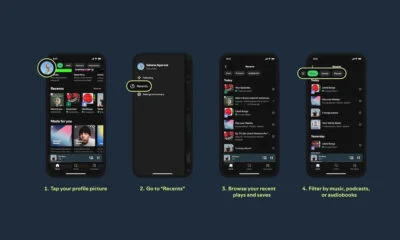News
Symantec Discovers Highly Sophisticated Chinese Hacking Tool
In its research report, Symantec calls the tool Daxin and describes it as the most advanced piece of malware researchers have seen.

In August 2021, the Cybersecurity and Infrastructure Security Agency (CISA) established the Joint Cyber Defense Collaborative (JCDC), a public-private cybersecurity information sharing partnership whose purpose is to unify defensive actions and drive down risk in advance of cyber incidents occurring. Now, one JCDC member, American cybersecurity software company Symantec, has discovered a never-before-seen hacking tool that has been successfully hiding for over a decade.
In its research report, Symantec calls the tool Daxin and describes it as the most advanced piece of malware Symantec researchers have seen.
Based on instances where components of the tool were combined with known Chinese hacking infrastructure, it’s almost certain that Daxin has originated from China. What’s more, the computers on which Daxin was discovered were also infected with other tools Chinese espionage actors are known to use.

“The malware appears to be used in a long-running espionage campaign against select governments and other critical infrastructure targets” explains Symantec’s Treat Hunter Team. “Most of the targets appear to be organizations and governments of strategic interest to China”.
Daxin allows attackers to perform various communications and data-gathering operations, and it appears to be optimized to perform especially well against hardened targets that can withstand less sophisticated attacks.
Also Read: How To Change Your Wi-Fi Password To Keep Intruders At Bay
“Daxin can be controlled from anywhere in the world once a computer is actually infected” said Vikram Thakur, a technical director with Symantec. “That’s what raises the bar from malware that we see coming out of groups operating from China”.
Since the initial discovery of Daxin, the U.S. government has shared the information with foreign partners to collectively stop the tool from spreading from country to country and from network to network.
So far, no organization in the United States has been infected by Daxin, but previous experience with malware like NotPetya, which was created by Russia to attack Ukrainian infrastructure, tells us that heightened caution is appropriate.
News
Samsung Smart Glasses Teased For January, Software Reveal Imminent
According to Korean sources, the new wearable will launch alongside the Galaxy S25, with the accompanying software platform unveiled this December.

Samsung appears poised to introduce its highly anticipated smart glasses in January 2025, alongside the launch of the Galaxy S25. According to sources in Korea, the company will first reveal the accompanying software platform later this month.
As per a report from Yonhap News, Samsung’s unveiling strategy for the smart glasses echoes its approach with the Galaxy Ring earlier this year. The January showcase won’t constitute a full product launch but will likely feature teaser visuals at the Galaxy S25 event. A more detailed rollout could follow in subsequent months.
Just in: Samsung is set to unveil a prototype of its augmented reality (AR) glasses, currently in development, during the Galaxy S25 Unpacked event early next year, likely in the form of videos or images.
Additionally, prior to revealing the prototype, Samsung plans to introduce…
— Jukanlosreve (@Jukanlosreve) December 3, 2024
The Galaxy Ring, for example, debuted in January via a short presentation during Samsung’s Unpacked event. The full product unveiling came later at MWC in February, and the final release followed in July. Samsung seems to be adopting a similar phased approach with its smart glasses, which are expected to hit the market in the third quarter of 2025.
A Collaborative Software Effort
Samsung’s partnership with Google has played a key role in developing the smart glasses’ software. This collaboration was first announced in February 2023, with the device set to run on an Android-based platform. In July, the companies reiterated their plans to deliver an extended reality (XR) platform by the end of the year. The software specifics for the XR device are expected to be unveiled before the end of December.
Reports suggest that the smart glasses will resemble Ray-Ban Meta smart glasses in functionality. They won’t include a display but will weigh approximately 50 grams, emphasizing a lightweight, user-friendly design.
Feature Set And Compatibility
The glasses are rumored to integrate Google’s Gemini technology, alongside features like gesture recognition and potential payment capabilities. Samsung aims to create a seamless user experience by integrating the glasses with its broader Galaxy ecosystem, starting with the Galaxy S25, slated for release on January 22.


























